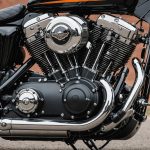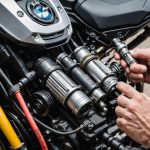Understanding Interior Vibrations in Luxury British Automobiles
An exquisite ride in luxury British cars warrants not only elegance but also unparalleled comfort. However, the presence of interior vibrations can significantly detract from this experience, turning what should be a smooth ride into something less desirable. But what exactly causes these interior vibrations?
Interior vibrations in high-end automobiles can arise from multiple sources. One primary cause is the engine and transmission systems, where mechanical imbalances may lead to noticeable tremors. Additionally, the vehicle’s suspension system, whether due to issues with alignment or worn components, can contribute to unwanted disruptions within the cabin.
In parallel : Top Strategies for Optimizing Battery Lifespan in Your British Plug-In Hybrid
Addressing these vibrations is paramount for ensuring both vehicle performance and passenger comfort. Eliminating such disturbances maintains the car’s prestigious standard and preserves the luxury for which it is renowned. Moreover, addressing vibrations can prevent further mechanical detriments, as continuous oscillations can lead to premature wear and tear of vehicle components.
For luxury British cars, crafting the perfect harmonious ride is integral to the brand’s identity. Hence, manufacturers invest in advanced engineering techniques and premium materials designed to dampen vibrations, ensuring a whisper-quiet cabin. Such efforts safeguard the serene environment quintessential to the luxurious driving experience.
Also read : Discover the exciting porsche gt3 rs apparel collection
Materials and Design Innovations for Vibration Reduction
In the realm of luxury automotive engineering, the emphasis on delivering a smooth and refined ride is paramount. This has led to significant advancements in the use of materials for vibration control. Luxury British automobile manufacturers often employ advanced composites and specially designed alloys that significantly dampen vibrations. These materials not only minimise unwanted vibrations but also enhance the overall structural integrity of the vehicle.
Design innovations also play a critical role in achieving superior vibration reduction. Manufacturers integrate multi-layered damping panels and adaptive suspension systems to further attenuate vibrations. These design features are crafted to respond dynamically to road conditions, providing an unparalleled driving experience.
Several case studies from leading luxury automobile brands illustrate these techniques effectively. One exemplary case involves the incorporation of noise-cancelling technologies combined with vibration-reducing materials to craft a serene cabin environment. This blend of advanced materials and innovative design underscores the commitment of high-end manufacturers to perfecting vibration control.
By continuously exploring new materials and design methods, luxury automobile engineers ensure each vehicle meets the high standards expected in the industry, pioneering solutions that promise both comfort and enhanced performance.
Tuning and Calibration Techniques
When it comes to automotive comfort and performance, understanding tuning processes and calibration techniques is essential. These methodologies are crucial to optimizing the ride experience and handling of a vehicle.
Overview of Tuning Methodologies
Tuning processes are engineered to balance comfort with performance. They involve adjusting various vehicle systems, including the engine, suspension, and steering. Fine-tuning these elements ensures smoother rides and responsive handling. Calibration techniques refine these adjustments by tailoring them based on specific driving requirements and road conditions.
The Role of Suspension Tuning
One of the most significant engineering insights revolves around suspension tuning. It plays a critical role in minimizing road-induced vibrations and ensuring ride comfort. By modulating the suspension system, engineers can effectively reduce disturbances from uneven roads or terrain, providing a comfortable ride without compromising on vehicle control.
Best Practices from Automotive Engineers
Automotive engineers share essential calibration techniques to enhance vehicle performance. A popular practice involves the detailed alignment of suspension components and the precise balancing of wheels. These adjustments improve stability and handling, contributing to a more pleasant driving experience. Following these engineering insights, manufacturers can implement robust calibration strategies, offering enhanced comfort and vehicle longevity.
Maintenance Tips for Optimal Performance
Proper vehicle maintenance is crucial to uphold the driving comfort and performance expected from a luxury automobile. Regularly scheduled maintenance helps in managing and preventing issues such as unwanted vibrations. One key aspect to focus on is the alignment of wheels. Misaligned wheels can lead to uneven tire wear, reduced fuel efficiency, and, most notably, vibrations that can disrupt the driving experience.
Regular Inspection
A comprehensive inspection should be part of your luxury automobile upkeep routines. Pay attention to tire conditions, as they are pivotal in maintaining smooth operation. Tires should be inspected for appropriate tread depth and even wear patterns. This not only extends their lifespan but also aids in preventing vibrations.
Wheel Alignment
Wheel alignment should be checked regularly. Misalignment can occur due to various factors including potholes or curb impacts. Proper alignment ensures optimal control and a smooth drive, reducing vibrations significantly. Regular alignment checks can thus maintain vehicle comfort and safety.
Servicing Standards
Ensure servicing is done by certified professionals familiar with luxury vehicle models. High-standard inspections will help in identifying issues early. By following these recommendations, you can maintain the elegance and precision of your vehicle while effectively managing vibrations.
Real-World Applications and Case Studies
In recent years, vibration reduction methodologies have been extensively developed to enhance the driving experience in luxury British cars. One prominent case study involves the acclaimed reduction of vibrations in high-end models that elevate comfort and precision on the road.
Success Stories in Luxury Cars
The use of advanced technologies, such as adaptive damping systems and refined suspension designs, has yielded significant benefits in vibration reduction. For instance, one specific luxury car example reportedly achieved a drastic reduction in cabin vibrations, enhancing passenger comfort and minimizing noise disturbances on various terrains. These measures have aided in maintaining a serene cabin environment, which is critical in luxury vehicle experiences.
Enthusiasts Speak Up
Enthusiasts and owners of these models frequently share anecdotal evidence of noticeable improvements. They cite smoother drives and the absence of disruptive vibrations that once plagued earlier versions. The combination of state-of-the-art engineering and keen attention to detail in design plays a crucial role in these successes.
Statistical Outcomes
Statistical data further validates these success stories. Implemented strategies in these vehicles have led to quantifiable reductions in vibration levels, marked by significant declines in frequency and amplitude measurements. These metrics underscore the practical effectiveness of the vibration reduction techniques tailored to the needs of discerning drivers.











